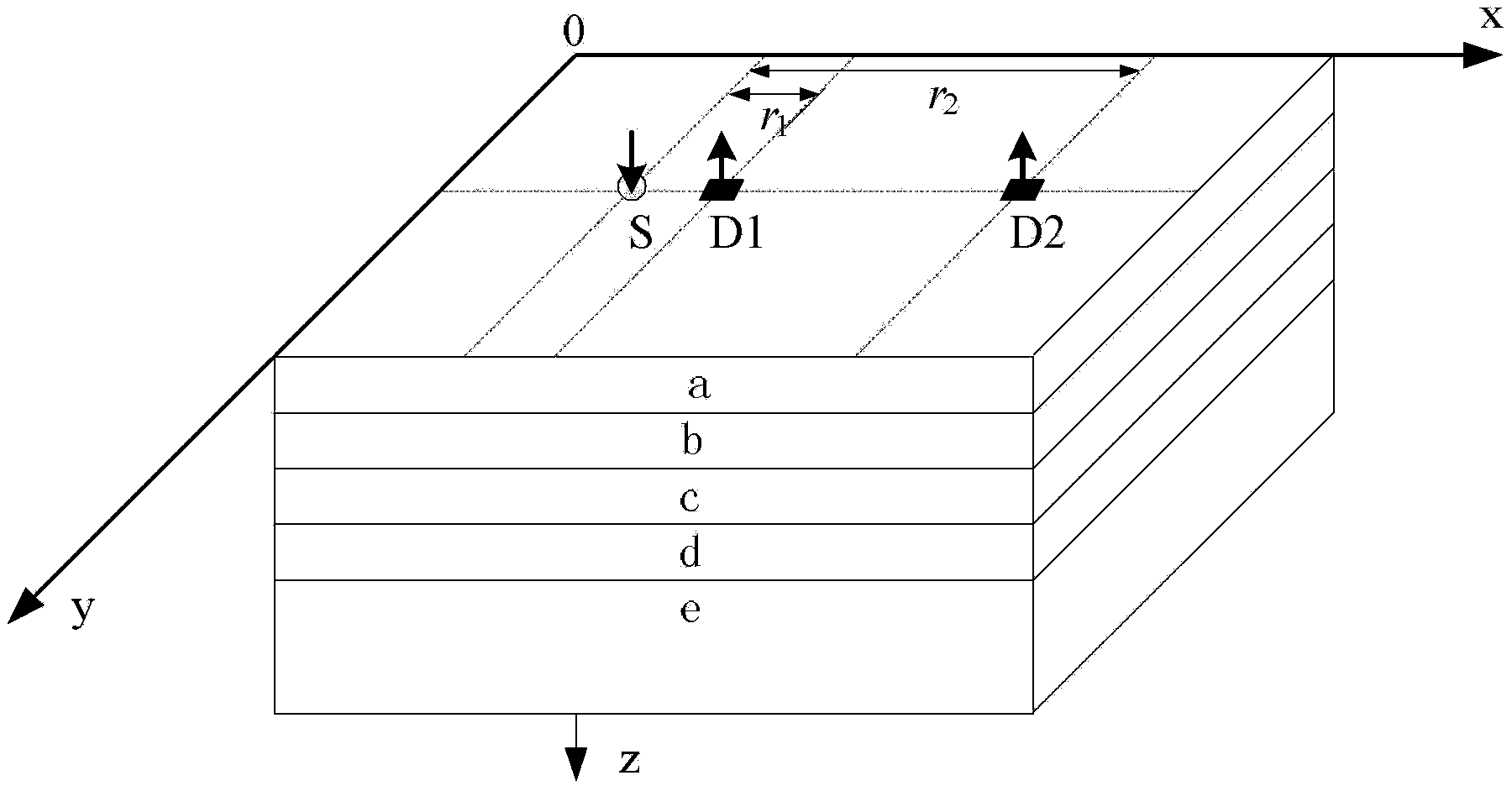Near-infrared brain-machine interface signal detection method integrating independent component analysis
A technology of independent component analysis and least squares method, applied in the field of hemoglobin concentration detection, which can solve the problems of inaccurate change in reduced hemoglobin concentration and accurate extraction of signals affecting brain function activity.
- Summary
- Abstract
- Description
- Claims
- Application Information
AI Technical Summary
Problems solved by technology
Method used
Image
Examples
specific Embodiment approach 1
[0067] Specific implementation mode one: the following combination figure 1 Describe this embodiment, the signal detection method of the near-infrared brain-computer interface of independent component analysis combined with the least squares method described in this embodiment, it includes the following steps:
[0068] Step 1: Use a near-infrared probe close to the scalp surface of the head to be detected, so that the near-infrared light emitted by the near-infrared probe is incident on the brain tissue to be tested. The near-infrared probe is composed of a dual-wavelength light source S, a detector D1 and a detector D2 , where the straight-line distance between the dual-wavelength light source S and the detector D1 is r 1 , 5mm≤r 1 ≤15mm, the linear distance between the dual-wavelength light source S and the detector D2 is r 2 , 30mm≤r 2 ≤45mm; the detector D1 is used to sense the hemodynamic changes of the outer brain tissue, and the detector D2 is used to sense the hemod...
specific Embodiment approach 2
[0102] Specific embodiment two: This embodiment is a further description of embodiment one. The two wavelengths emitted by the dual-wavelength light source S in this embodiment are respectively λ 1 =760nm, λ 2 =850nm.
specific Embodiment approach 3
[0103] Specific Embodiment Three: This embodiment is a further description of the first or second embodiment, the straight-line distance r between the dual-wavelength light source S and the detector D1 in this embodiment 1 is 10mm, the linear distance r between the dual-wavelength light source S and the detector D2 2 is 40mm.
[0104] The distance between the two detectors set in this embodiment is about twice the detection depth of the near-infrared light, so that the near-infrared light detected by the detector D2 can effectively penetrate into the cerebral cortex, and the near-infrared light detected by the detector D1 only Penetrates the outer layer of brain tissue. Then, the obtained optical density change is transformed into a time series of oxyhemoglobin concentration changes by amending Lambert-Beer's law △[HbO 2 ] N (k), △[HbO 2 ] F (k) and time series of changes in reduced hemoglobin concentration △[HHb] N (k), △[HHb] F (k). The time series △[HbO 2 ] N (k),...
PUM
 Login to View More
Login to View More Abstract
Description
Claims
Application Information
 Login to View More
Login to View More - R&D
- Intellectual Property
- Life Sciences
- Materials
- Tech Scout
- Unparalleled Data Quality
- Higher Quality Content
- 60% Fewer Hallucinations
Browse by: Latest US Patents, China's latest patents, Technical Efficacy Thesaurus, Application Domain, Technology Topic, Popular Technical Reports.
© 2025 PatSnap. All rights reserved.Legal|Privacy policy|Modern Slavery Act Transparency Statement|Sitemap|About US| Contact US: help@patsnap.com



